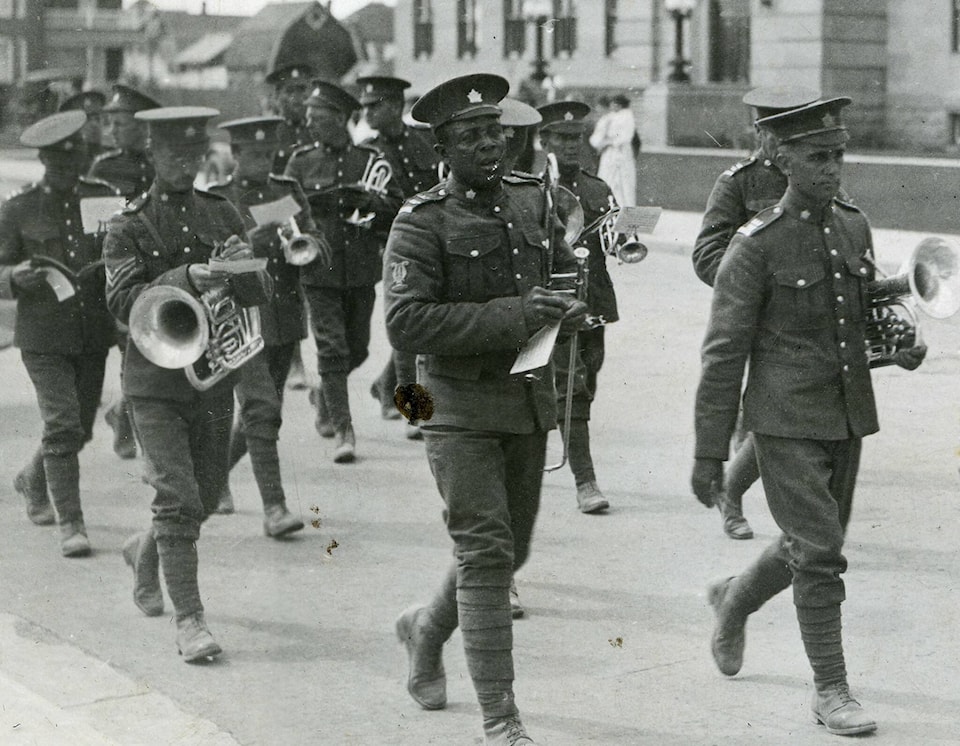Another annual Veterans’ Week is upon us, culminating in Remembrance Day on Thursday, November 11, 2021. It is time to remember all those who served and all those who lost their lives in times of war and during peacekeeping operations, in order that we might continue to enjoy freedom and peace.
In the last few years, more attention has been paid to the diversity of those who served Canada in the wars, particularly First Nations and Métis, as well as Black Canadians.
In the latter case, there have been articles written on the first and only all-black unit in Canadian military history, the Second Construction Battalion, from Nova Scotia in the First World War. Generally, with other units, there were only one or two black members, at most, and almost all blacks were assigned to non-combative duties.
An exception was the first Black Canadian from central Alberta to enlist and serve in the First World War, Samuel Daniel Watts.
Samuel Watts was born on May 25, 1882 in Texas, son of Daniel Sr. and Mary Watts. In 1904, he moved to Canada, where hopefully there would be less discrimination and more opportunity. Although Watts was visibly black, he sometimes stated that his ethnic background was Irish.
In 1907, Watts married Margaret Forshaw of Calgary, who had emigrated from Liverpool, England, at the turn of the last century. They were to have three sons, Roy (1909), Percy (1911) and Eric (1917). In 1910, Watts officially confirmed his commitment to his new home by becoming a naturalized Canadian.
Watts got a job as a shoe shiner at Fort Macleod, Alta. Being very talented musically, he joined the town band. He became active with other musical groups. He even wrote some of his own musical compositions.
Watts had an innovative mind. He was constantly working on inventions, two of which he managed to get patented. One of those patents was for a letter stamping machine that could cut, lick and place postage stamps on envelopes.
When the First World War broke out, Watts attempted to enlist. However, he was initially turned down. In May 1916, while he was working as a camp cook near Olds, he tried again. This time he was accepted into the 187 Battalion of Innisfail and Red Deer. Lt. Colonel Robinson was anxious to have a strong regimental band and someone like Watts appeared to be a good fit.
Shortly after enlistment, one of Watt’s musical compositions, “Remember Me in Flanders” was printed on the front page of the Red Deer Advocate.
After training in Red Deer and Calgary, Watts went overseas. He was transferred to the 50 Battalion while in England. He was then sent to trenches of Flanders and Northern France, where he served as an active combatant.
In August 1917, during the brutal Battle of Lens, a group from the 50 Battalion were assigned to a night trench raid, to get a better sense of the enemy’s position. Lyle McDougall of Penhold was one of those selected, but wasn’t keen to go. His trench mate, Samuel Watts agreed to go in his stead, with the offer that McDougall would return the favour during another raid.
Tragically Watts was badly wounded and passed away the next day on August 22, 1917. He was buried in the Lanpugnay Military Cemetery near Bethune, France. Shortly thereafter, McDougall was badly wounded by shellfire.
Margaret was left as a single mother with three young boys to raise (the youngest, Eric, having been born after his father had enlisted).
Watts was widely praised after his death while on active service. The Windsor Star wrote one such article under the headline, S.D. Watts was a Negro Patriot. It described him as “a humble Negro, a shoeshiner, but a man of ambition, a brainy man and an individual regarding whom many optimistic forecasts were made.” It added that if the war had not intervened, Watts could well have become another Booker T. Washington.
In 1980, Watts’ “death penny,” a medallion issued to the widow and/or family, to honour someone killed while on active service, was found in a pile of dirt in the backyard of a home in Red Deer. The finders kept the medallion for several years, but eventually sold it to a collector. Watts’s family has been making appeals to see if that medallion can be found again.
Red Deer historian Michael Dawe’s column appears Wednesdays.
